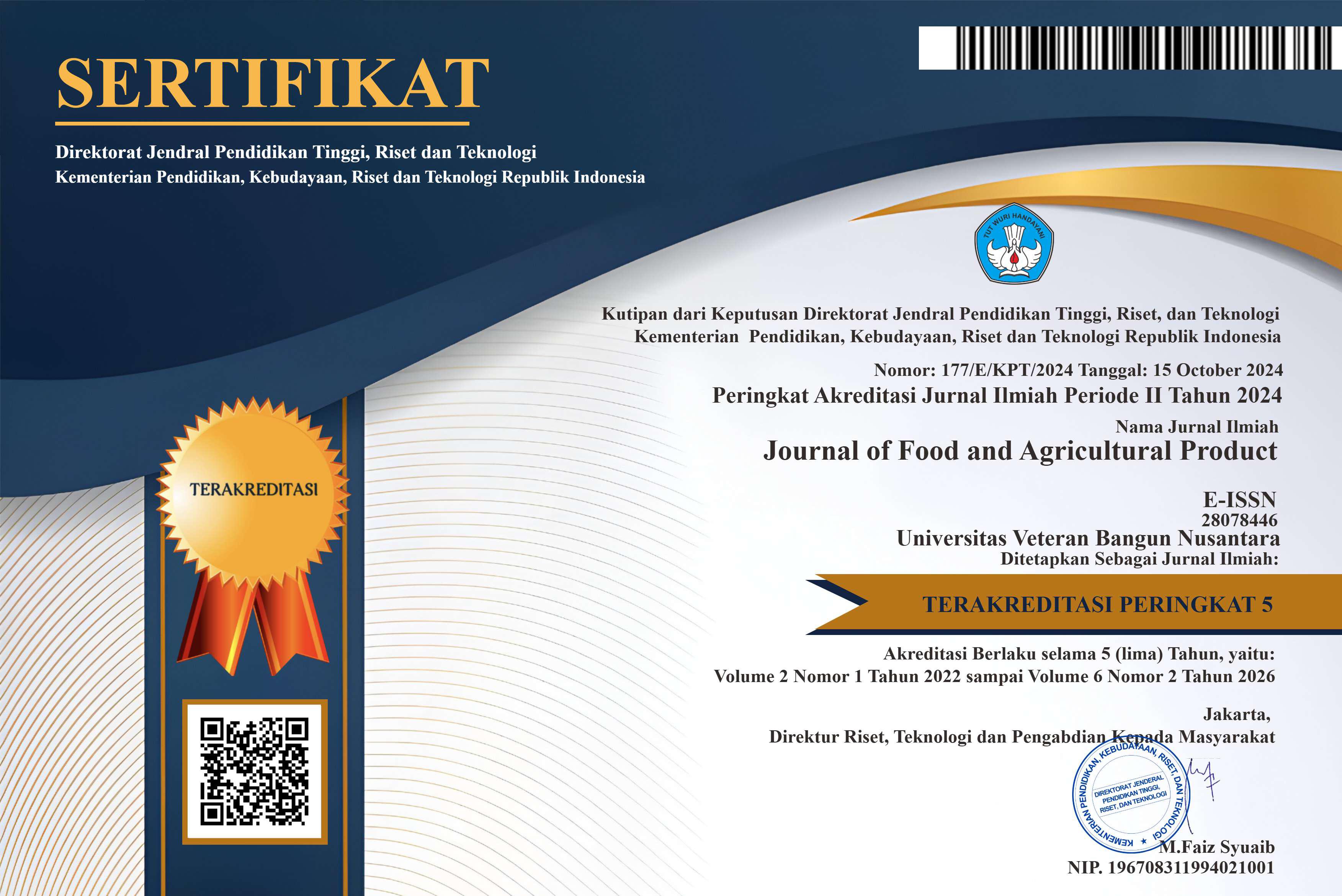Characteristics of the physicochemical properties of purple sweet potato flour (Ipomea batatas L.) with temperature variations in drying cabinet dryer
DOI:
https://doi.org/10.32585/jfap.v3i2.4390Abstract
Purple sweet potatoes are highly prevalent in Indonesia and possess numerous advantageous qualities. However, the susceptibility of fresh purple sweet potatoes to damage during storage necessitates the implementation of a drying or sieging process. The objective of this study is to investigate the impact of fluctuations in drying temperature on the physicochemical properties of purple sweet potato flour (Ipomea batatas L.). The research methodology employed in this study utilises a complete randomised design (RAL) with a single factor, namely temperature, which consists of four levels (50°C, 60°C, 70°C, 80°C). Each level of temperature is repeated three times, resulting in a total of three repetitions. The data underwent analysis utilising the ANOVA test to determine the presence of a significant difference. Subsequently, the Duncan Multiple Range Test (DMRT) analysis was conducted at a significance level of 0.05. The parameters examined encompass physical attributes, such as yield, water absorption, and kamba density, as well as chemical attributes, including moisture content, ash content, and coarse fibre content. The findings indicate that variations in drying temperature significantly impact the physical properties, including vehurrence, water absorption, and kamba density. The variation in drying temperature has a
discernible impact on both moisture content and fibre content, while it does not exhibit a perceptible influence on ash content. Based on the findings from the analysis of the purple sweet potato flour test, it has been determined that the treatment with the lowest water content was recorded at 7.68% under a temperature of 50°C. Similarly, the treatment with the lowest ash content was observed at 2.23% under the same temperature condition. Conversely, the treatment with the highest fibre content was measured at 4.33%. Furthermore, the treatment with the highest yield was obtained at 22.28% under a temperature of 50°C. Additionally, the treatment with the highest water absorption was recorded at 114.66% under the same temperature condition. Lastly, the treatment with the lowest bulk density was observed at 71.05 g/ml under a temperature of 80°C.
Keywords: purple sweet potato flour, drying temperature, physicochemical characteristics.
Downloads
Downloads
Published
How to Cite
Issue
Section
License
Copyright (c) 2023 Journal of Food and Agricultural Product

This work is licensed under a Creative Commons Attribution-NonCommercial-NoDerivatives 4.0 International License.




